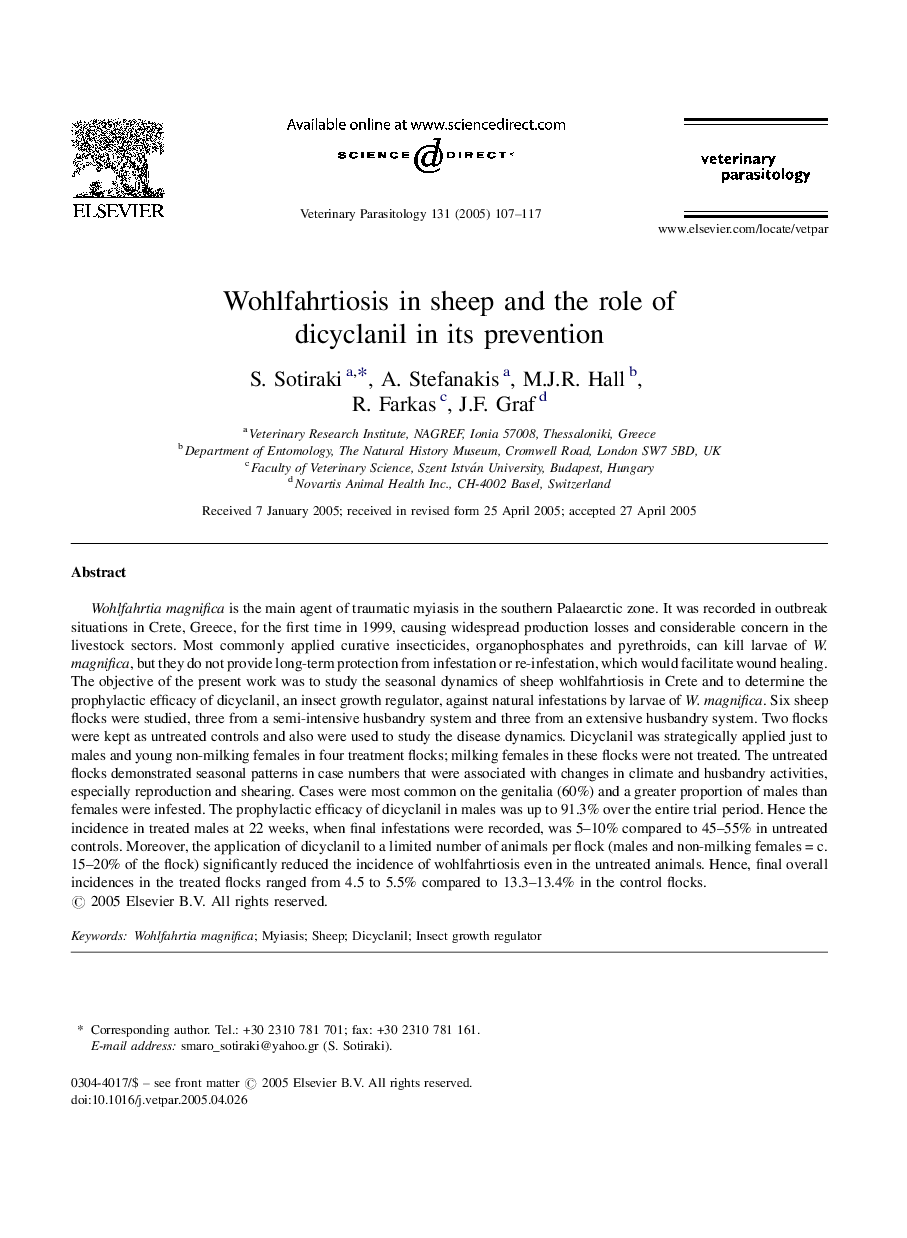| Article ID | Journal | Published Year | Pages | File Type |
|---|---|---|---|---|
| 8990954 | Veterinary Parasitology | 2005 | 11 Pages |
Abstract
Wohlfahrtia magnifica is the main agent of traumatic myiasis in the southern Palaearctic zone. It was recorded in outbreak situations in Crete, Greece, for the first time in 1999, causing widespread production losses and considerable concern in the livestock sectors. Most commonly applied curative insecticides, organophosphates and pyrethroids, can kill larvae of W. magnifica, but they do not provide long-term protection from infestation or re-infestation, which would facilitate wound healing. The objective of the present work was to study the seasonal dynamics of sheep wohlfahrtiosis in Crete and to determine the prophylactic efficacy of dicyclanil, an insect growth regulator, against natural infestations by larvae of W. magnifica. Six sheep flocks were studied, three from a semi-intensive husbandry system and three from an extensive husbandry system. Two flocks were kept as untreated controls and also were used to study the disease dynamics. Dicyclanil was strategically applied just to males and young non-milking females in four treatment flocks; milking females in these flocks were not treated. The untreated flocks demonstrated seasonal patterns in case numbers that were associated with changes in climate and husbandry activities, especially reproduction and shearing. Cases were most common on the genitalia (60%) and a greater proportion of males than females were infested. The prophylactic efficacy of dicyclanil in males was up to 91.3% over the entire trial period. Hence the incidence in treated males at 22 weeks, when final infestations were recorded, was 5-10% compared to 45-55% in untreated controls. Moreover, the application of dicyclanil to a limited number of animals per flock (males and non-milking females = c. 15-20% of the flock) significantly reduced the incidence of wohlfahrtiosis even in the untreated animals. Hence, final overall incidences in the treated flocks ranged from 4.5 to 5.5% compared to 13.3-13.4% in the control flocks.
Related Topics
Life Sciences
Agricultural and Biological Sciences
Animal Science and Zoology
Authors
S. Sotiraki, A. Stefanakis, M.J.R. Hall, R. Farkas, J.F. Graf,
